Skirting snow-caps
Saturday, 25 January 2025
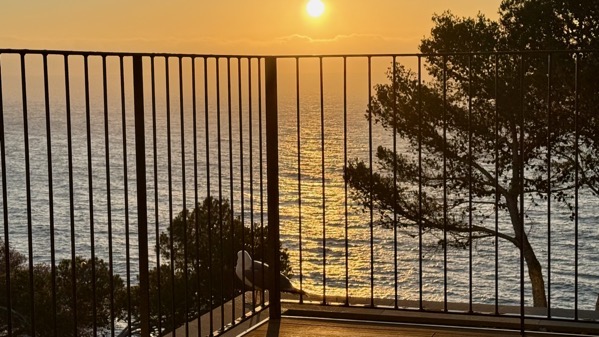
A beggar came by to watch the sunrise with me. Truth: it was more interested in begging than the view.
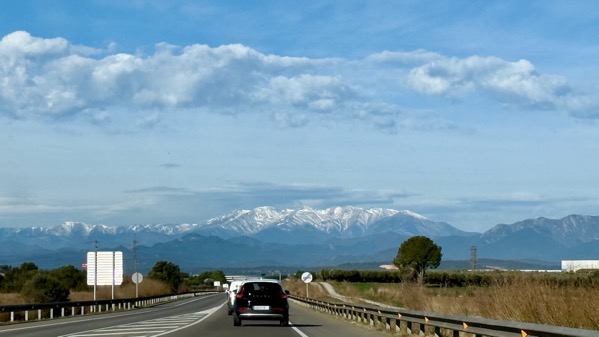
On the road, these snow-caps dominated our skyline to the northwest. We headed first into the mountains out of the photo to the right.
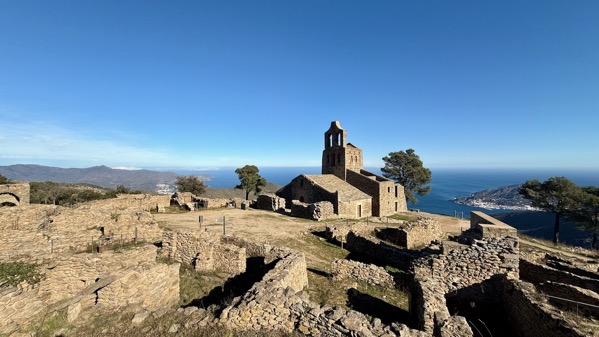
We drove most of the way to this ruin, walking the last hundred meters. This is the Église de Santa Helena de Rodes (sometimes Elena), and the ruins of the medieval town around the church, called Santa Cruz de Rodes. This is a satellite community about a half-kilometer from the Benedictine Monastery of Sant Pere de Rodes. The Monastery was famous for having small relics of THE Saint Peter, which justify the size of that complex, undoubtedly paid for by donations (eh-hem) from the many pilgrims who flocked to this out-of-the-way place.
Rodes is now Roses, on the bay to the south. The central part of the church and most of the bell-tower date to the 10th C (archival mention in 974), although there may have been an earlier use of this location. Several expansions widened the structure and added a portico to the entry.
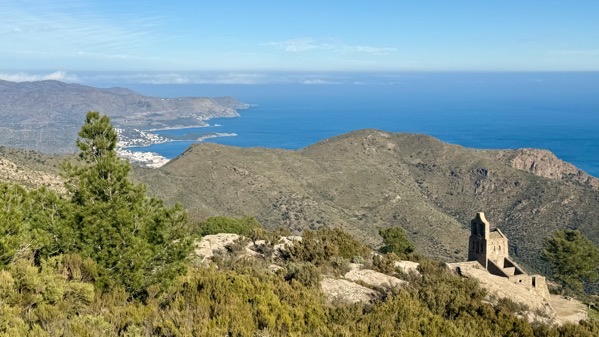
I scrambled up the slope to get this shot. The bushes are woody and tough. Arguably, they make gorse seem wimpy.
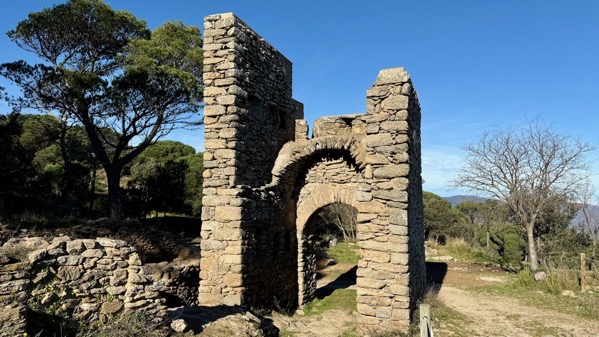
The north gate, away from the monastery, is more elaborate. I’m guessing pilgrims and supplies came from that direction.
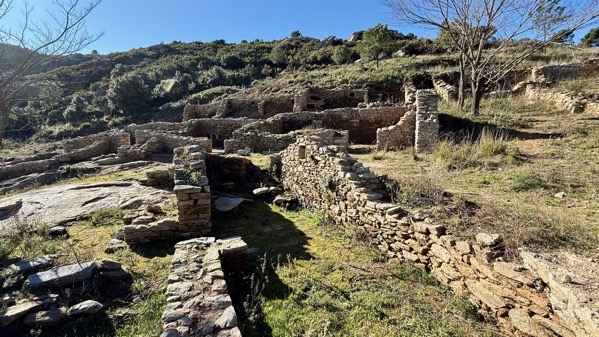
Here’s a closer view of some of the dwellings south of the church and outside the South Gate.
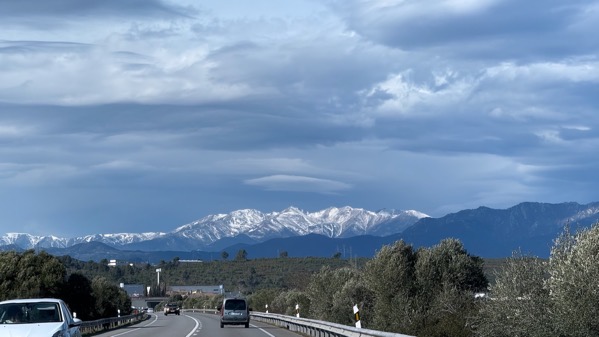
We backtracked away from the church, then continued north. The snow-caps remained to our left (although they don’t appear that way on this bend).
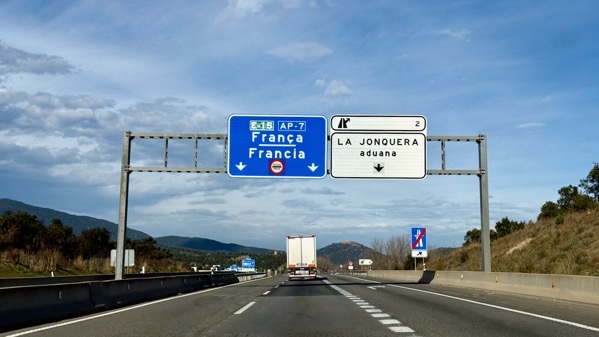
I find it interesting that aduana (customs) remains on the signs, although the building complex is abandoned.
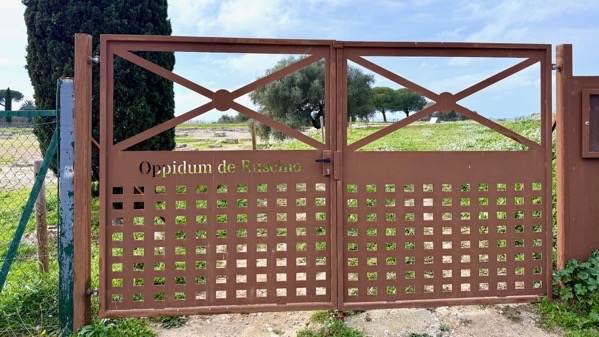
For now the site of Ruscino is closed. This was an important trading center in Greek times, when a string of them were dotted along the coast of the Gulf of Lion. By 218 BC, Livy described Ruscino as walled and hosting boats in river trade…meaning that their principal trade goods came from inland, upstream via the river we now call Têt. I think valuable goods from the Canigó massif south of the river and inland, where there is still a mining area.
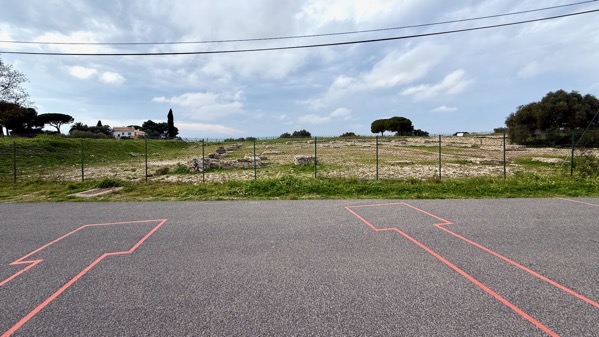
Clever archaeologists have indicated the outlines of walls buried by the road.
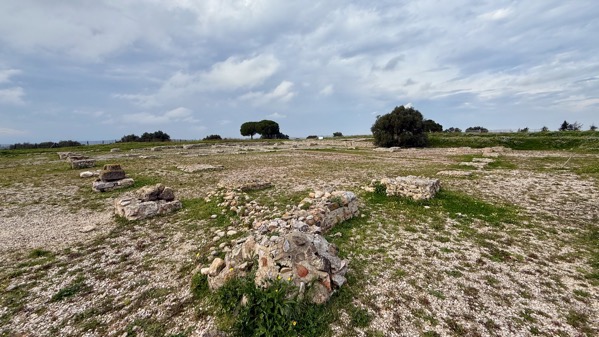
This is a wide shot of the excavated area beyond the fence (west). The historic area of France called Roussillon takes its name from this ghost town. Hannibal and his thousands crossed the Pyrenees somewhere around here on their way from Cartagena toward the Alps.
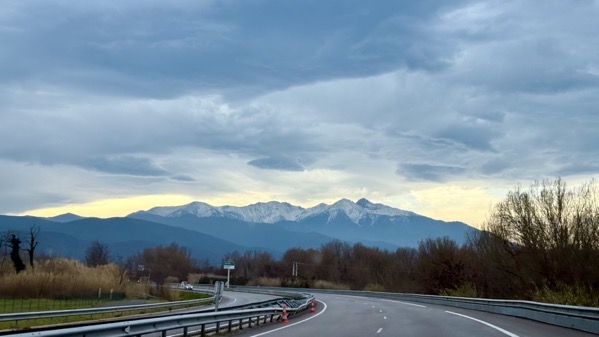
As we continued up the Têt valley, the mountains still attracted our eyes.
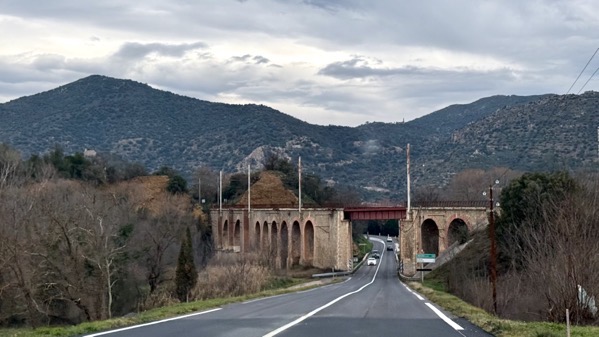
Interesting railroad bridge.
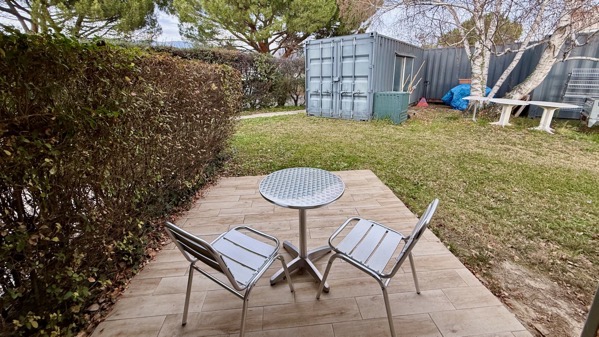
Our room has a sweet patio, sweeter if it were sunny and the shipping container weren’t there. No seagulls, and no sunrise view expected.